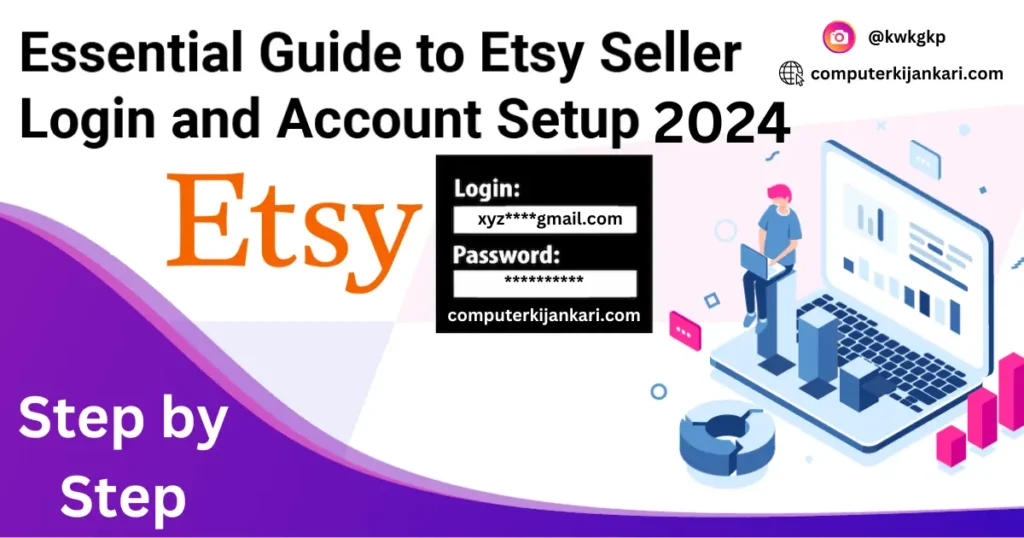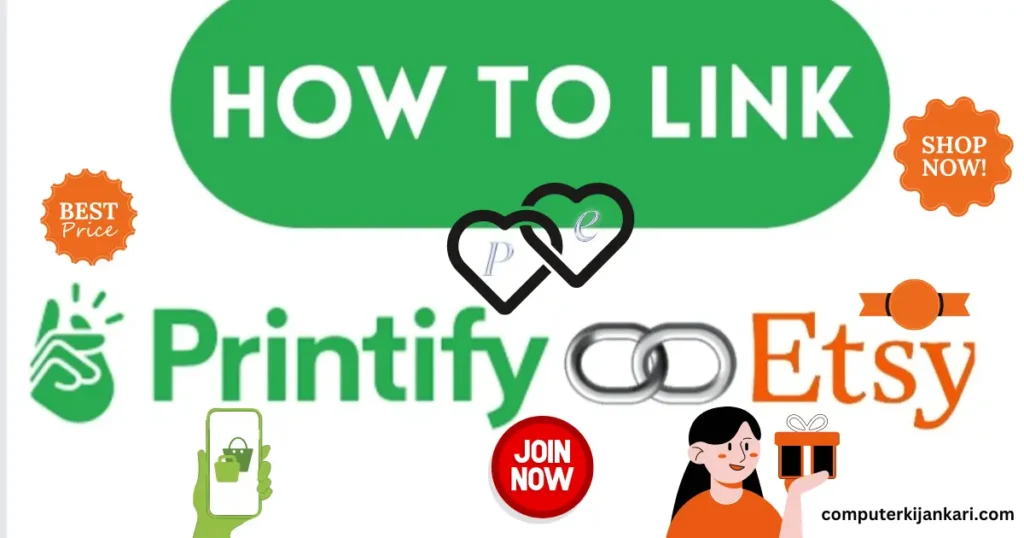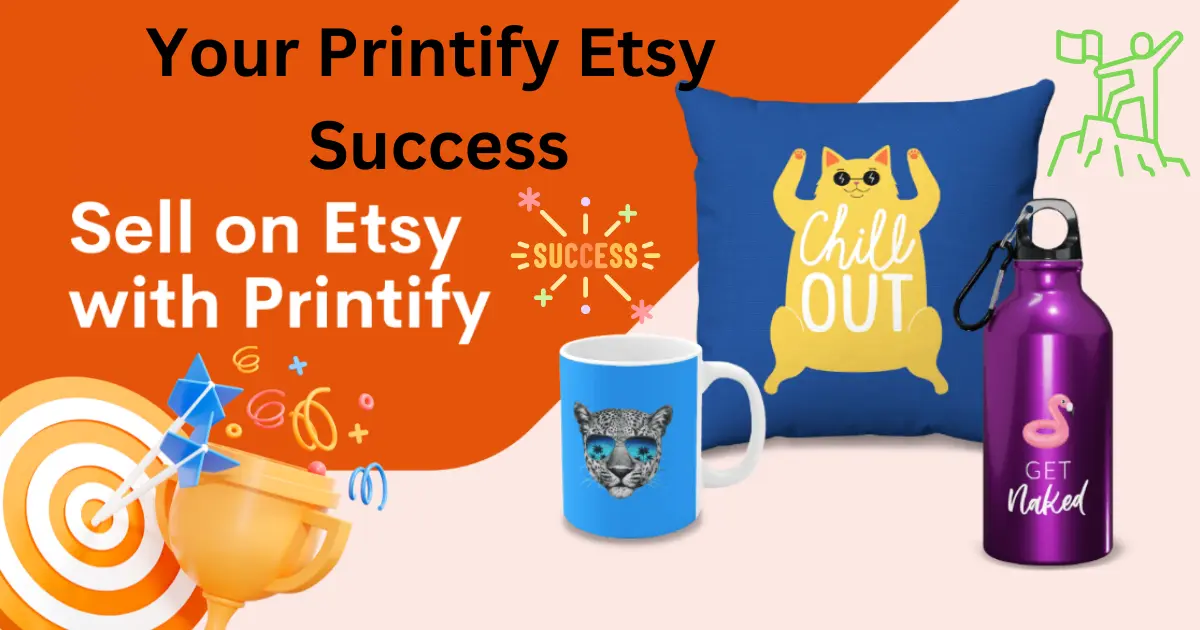Introduction about printify etsy
Printify and Etsy can be a powerful combination for anyone who wants to sell custom products online without the hassle of holding inventory or managing fulfillment. Here’s a quick rundown:
Etsy is a popular online marketplace for handmade, vintage, and creative goods. It allows sellers to set up their own shops and list their products for millions of potential customers to browse and buy.
Printify is a print-on-demand (POD) dropshipping service. This means they partner with you (the seller) and connect to your Etsy shop. You create designs for products like t-shirts, mugs, or phone cases. When a customer makes a purchase on your Etsy store, Printify takes the order, prints your design on the chosen product, and ships it directly to the customer. You don’t have to worry about keeping stock or fulfilling orders yourself.
Benefits of using Printify with Etsy:
- No upfront inventory: You don’t need to buy products in bulk before selling them.
- Wide variety of products: Printify offers a wide range of products to customize with your designs.
- Easy to use: The integration between Printify and Etsy is simple to set up and manage.
- Focus on design and marketing: You can spend more time creating great designs and marketing your shop.
Printify
Printify Explained: Your POD Partner for Custom Products
Printify is a print-on-demand (POD) dropshipping service. Let’s break that down:
- Print-on-Demand (POD): You design the product (t-shirt, mug, etc.), but Printify holds the inventory of blank products. They only print your design when a customer orders it, eliminating the need for you to buy products in advance.
- Dropshipping: Printify takes care of the entire fulfillment process. Once a customer buys from your store, Printify prints your design on the product, packages it, and ships it directly to the customer. You don’t have to handle any inventory or shipping yourself.
Here’s what Printify offers:
- Wide Variety of Products: From apparel and accessories to home decor and tech gadgets, Printify allows you to customize a vast range of products with your designs.
- Mockup Generator: Design and visualize your products with ease using their free mockup generator.
- Global Network of Printers: Printify partners with printing providers around the world, ensuring faster delivery times for your customers.
- Easy Integration: Connects seamlessly with various e-commerce platforms like Etsy, Shopify, and others.
- Focus on Design & Marketing: Lets you dedicate your time to creating great designs and promoting your products.
Benefits of Using Printify:
- Low Startup Costs: No need for upfront inventory investment.
- Scalability: Easily scale your business up or down without inventory worries.
- Reduced Risk: Experiment with different designs without the risk of leftover stock.
- Convenience: Printify handles the printing, packaging, and shipping for you.
- Flexibility: Sell your products on various platforms with Printify’s integrations.
Is Printify Right for You?
Printify is a great option for anyone who wants to sell custom products online without the hassle of inventory management and fulfillment. It’s ideal for:
- Creative entrepreneurs with unique designs
- Small businesses looking to expand their product range
- Anyone who wants to test the waters of e-commerce
Etsy

Etsy, known for its focus on handmade and vintage treasures, is a fantastic platform for both buyers and sellers. Here’s a dive into what Etsy offers:
For Buyers:
- Unique Products: Discover one-of-a-kind, handcrafted items, vintage finds, and personalized creations you won’t find anywhere else.
- Support Small Businesses: Directly purchase from independent sellers and artisans, fostering a sense of community.
- Wide Variety: Explore a vast array of categories, from jewelry and clothing to home decor, toys, art, and craft supplies.
- Customization Options: Many sellers offer customization options, allowing you to personalize items to your taste.
- Vintage Gems: Unearth unique vintage treasures with a story, often at competitive prices compared to traditional antique stores.
For Sellers:
- Sell Your Crafts: Turn your passion into profit by setting up your own Etsy shop to sell your handmade creations.
- Reach a Global Audience: List your products for millions of potential customers worldwide.
- Easy Shop Setup: Etsy provides a user-friendly platform to create your shop and manage your listings.
- Marketing Tools: Utilize built-in tools and marketing features to promote your shop and products.
- Community Support: Connect with a supportive community of sellers and crafters who share your passion.
Things to Consider When Buying on Etsy:
- Read Reviews: Check seller reviews to gauge their reputation and customer service.
- Shop Policies: Review shop policies for shipping times, returns, and exchanges.
- Handmade vs. Vintage: Understand the distinction between handmade and vintage items.
- Vintage Condition: For vintage items, be mindful of the described condition.
Things to Consider When Selling on Etsy:
- Product Quality: Ensure your products are high-quality and meet customer expectations.
- Shop Presentation: Create a visually appealing shop with clear product descriptions and photos.
- Competitive Pricing: Research similar products to set competitive prices.
- Customer Service: Provide excellent customer service to build trust and positive reviews.
Integrating Printify with Etsy

Integrating Printify with your Etsy shop is a breeze and unlocks a world of possibilities for selling custom products. Here’s how to get started:
Prerequisites:
- An existing Etsy shop (you can create one for free on https://www.etsy.com/)
- A Printify account (also free to sign up on https://printify.com/)
Steps to Integrate:
- Log in to your Printify account.
- Go to your Shop Manager on Printify.
- Click on Manage Stores.
- Select Connect and choose Etsy as the platform.
- You might see an option to Add a new store if you haven’t connected any shops yet.
- Log in to your Etsy account (if not already logged in) when prompted.
- Grant permission to Printify to access your Etsy shop information.
- Congratulations! Your Etsy shop is now connected to Printify.
Additional Tips:
- Printify recommends creating at least one draft product on your Etsy shop before connecting it. This is a temporary step and you can delete the draft product later.
- Once connected, you can browse Printify’s product catalog and choose the items you want to sell.
- Printify offers a mockup generator to help you visualize your designs on different products.
- When creating your Etsy listings for Printify products, set your pricing to include your profit margin on top of Printify’s base price.
- Printify takes care of fulfilling orders, including printing, packaging, and shipping directly to your customer.
Benefits of Integration:
- Sell custom products without managing inventory or fulfillment.
- Wide variety of products to choose from and customize with your designs.
- Focus on design and marketing your Etsy shop.
- Simplified order management through Printify’s platform.
Resources:
- Printify’s Help Center on Etsy Integration: https://printify.com/etsy/
- Video tutorial on How to connect Printify to your Etsy Shop: [YouTube how to integrate printify with etsy ON youtube.com]
Creating Products with Printify on Etsy
Now that you understand both Printify and Etsy, let’s dive into how you can create and sell custom products using Printify on your Etsy shop:
1. Design is King:
- This is where your creativity shines! You’ll need designs for the products you want to sell on Etsy.
- You can create your own designs using graphic design software or commission a designer.
- Printify offers a free mockup generator to visualize your designs on different products.
Choosing Products on Printify:
- Browse Printify’s extensive product catalog and choose items that complement your designs.
- Consider factors like target audience, product popularity, and profit margins when selecting products.
- Printify offers a wide range of products like t-shirts, mugs, phone cases, tote bags, and more.
Uploading Your Design and Setting Up Products:
- Once you have your design and chosen products, upload your design to Printify.
- Printify provides guidelines for design specifications to ensure quality printing.
- Set your product pricing on Printify, factoring in their base price and your desired profit margin.
Integrating Your Etsy Shop (if not done already):
- Follow the steps mentioned earlier to connect your Etsy shop with Printify.
- Having a draft product listed on Etsy before integration is recommended by Printify (you can delete it later).
Creating Etsy Listings for Printify Products:
- Once your products are set up on Printify, you can create corresponding listings on your Etsy shop.
- Use high-quality product photos (Printify’s mockups can be helpful) and clear descriptions that highlight your design and the product’s features.
- Optimize your listings with relevant keywords to improve search ranking on Etsy.
Optimizing and Marketing Your Shop:
- Continuously monitor your product performance and adjust pricing or designs as needed.
- Utilize Etsy’s marketing tools and explore additional marketing strategies to promote your shop and products.
- Excellent customer service is crucial for building trust and positive reviews on Etsy.
Pricing and Profitability
When it comes to selling custom products through Printify and Etsy, pricing and profitability are key factors to consider. Here’s a breakdown to help you optimize your earnings:
Understanding Costs:
- Printify Base Price: This is the cost you pay Printify for each product, including printing and fulfillment. It varies depending on the product type, material, and printing complexity.
- Etsy Listing Fees: Etsy charges a small listing fee per item and a transaction fee for each sale.
Calculating Profit Margin:
- Determine your desired profit margin: This is the percentage of profit you want to make on each sale. Ideally, it should cover your business costs and leave you with a healthy return.
- Factor in all costs: Include Printify base price, Etsy listing fees, and any other relevant expenses (e.g., design fees, marketing costs).
Setting Your Etsy Price:
- Cost-plus pricing: Add your desired profit margin to the total cost per product (Printify base price + Etsy fees + other expenses) to arrive at your selling price.
Example:
- Let’s say you want a 30% profit margin.
- Printify base price for a t-shirt: $5.00
- Etsy listing fee: $0.20
- Other expenses (e.g., design): $1.00
Total cost per t-shirt: $5.00 (Printify) + $0.20 (Etsy) + $1.00 (Other) = $6.20
Desired profit margin: 30%
Selling price on Etsy: $6.20 / (1 – 0.30) = $8.86 (rounded to two decimal places)
Tips for Maximizing Profit:
- Offer a range of products: Cater to different budgets with various product types and price points.
- Discount bundles: Provide discounts for bundled products (e.g., t-shirt and mug with the same design).
- Promotional offers: Run occasional sales or promotions to attract customers without sacrificing profit margins too much.
- Track your results: Monitor your sales data and adjust pricing strategies based on performance.
Tips for Maximizing Profit:
- Offer a range of products: Cater to different budgets with various product types and price points.
- Discount bundles: Provide discounts for bundled products (e.g., t-shirt and mug with the same design).
- Promotional offers: Run occasional sales or promotions to attract customers without sacrificing profit margins too much.
- Track your results: Monitor your sales data and adjust pricing strategies based on performance.
Managing Orders and Fulfillment
The beauty of using Printify with Etsy lies in its streamlined order fulfillment process. Here’s how it works:
Order Management:
- Orders Consolidated: You won’t receive individual orders on both platforms. Printify acts as a central hub, where you’ll manage all your Etsy orders.
- Marking Orders as Fulfilled: No need to manually mark orders as fulfilled on Etsy. Once Printify receives the order from your Etsy shop, they handle everything.
- Printify Dashboard: Track order status, printing stages, and shipment details within your Printify dashboard.
Printify Fulfillment Process:
- Customer Orders on Etsy: A customer places an order on your Etsy shop for a product you fulfill through Printify.
- Order Sent to Printify: Etsy automatically sends the order details and customer information to Printify.
- Printify Takes Over: Printify receives the order, prints your design on the chosen product, and packages it for shipment.
- Direct Shipment to Customer: Printify ships the product directly to your customer with their branding (optional).
Benefits of Printify Fulfillment:
- Saves You Time: No need to manage inventory, pack orders, or run to the post office.
- Scalability: Easily handle increased order volume without fulfillment hassles.
- Quality Control: Printify ensures quality printing and product fulfillment.
- Tracking Information: You and your customer receive tracking information once the order is shipped.
Your Role in Order Management:
- Monitor Order Status: Keep an eye on order progress within your Printify dashboard.
- Customer Communication: Address any customer inquiries related to orders or fulfillment directly through Etsy.
- Returns and Exchanges: Handle customer return or exchange requests according to your Etsy shop policies.
Marketing and Promotion
Once you’ve established your Etsy shop with Printify integration, creating a strong marketing strategy is essential to attract customers and boost sales. Here are some key tactics to consider:
Optimizing Your Etsy Shop:
- SEO: Conduct keyword research to optimize your product listings and shop titles for relevant search terms on Etsy.
- High-Quality Photos: Showcase your products with professional-looking photos that capture their details and entice potential buyers.
- Compelling Descriptions: Craft clear and engaging descriptions that highlight your product’s features, benefits, and materials.
Social Media Marketing:
- Choose Your Platforms: Identify social media platforms where your target audience is active (e.g., Instagram for visual products, Pinterest for home decor).
- Visually Appealing Content: Share eye-catching product photos, lifestyle images featuring your products in use, and behind-the-scenes glimpses of your creative process.
- Engage with Your Audience: Respond to comments, answer questions, and participate in relevant conversations to build a community.
- Run Social Media Ads: Consider paid advertising on social media platforms to reach a wider audience and target specific demographics.
Building Your Brand:
- Develop a Brand Identity: Create a cohesive brand image that reflects your design style and resonates with your target audience.
- Storytelling: Share your creative journey, the inspiration behind your designs, and the heart behind your business to connect with customers on a deeper level.
- Customer Reviews: Encourage satisfied customers to leave positive reviews on your Etsy shop. Positive reviews build trust and attract new buyers.
Additional Marketing Strategies:
- Etsy Ads: Utilize Etsy’s built-in advertising platform to promote your products directly to potential Etsy customers searching for similar items.
- Email Marketing: Build an email list and send targeted campaigns featuring new products, promotions, and exclusive offers to your subscribers.
- Collaborations: Partner with complementary Etsy shops or influencers to reach new audiences.
- Public Relations: Pitch your products to relevant blogs or online publications for potential features or reviews.


